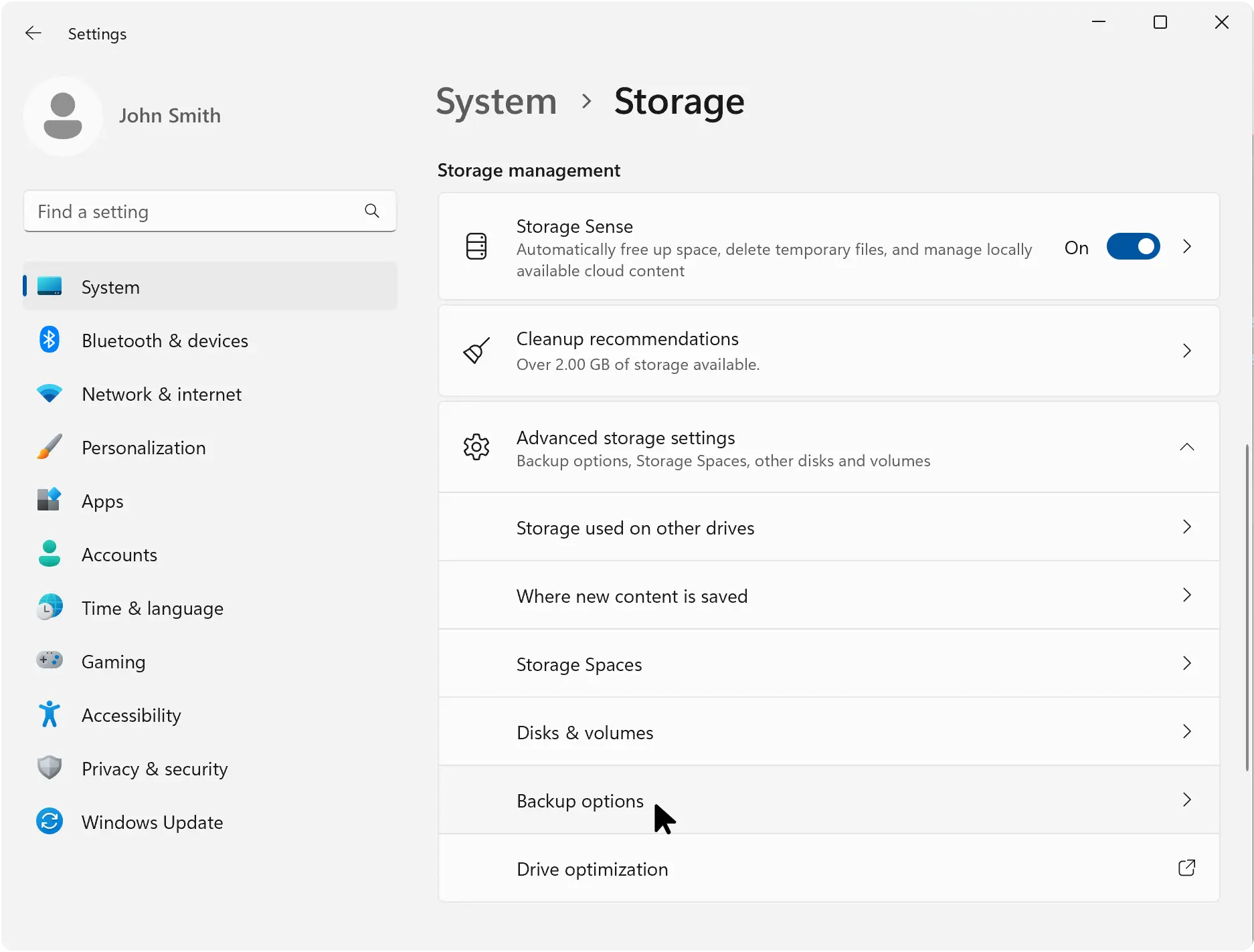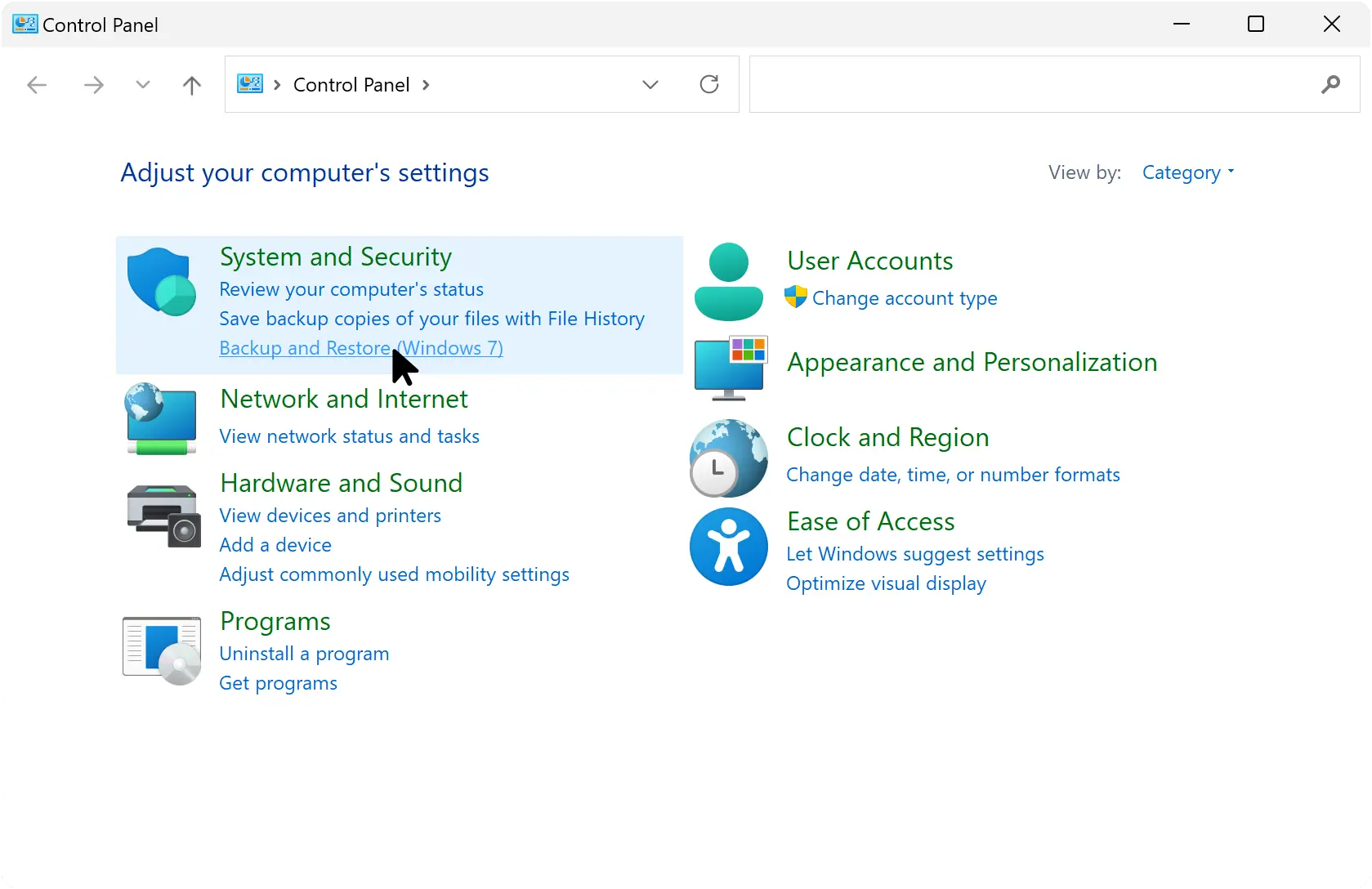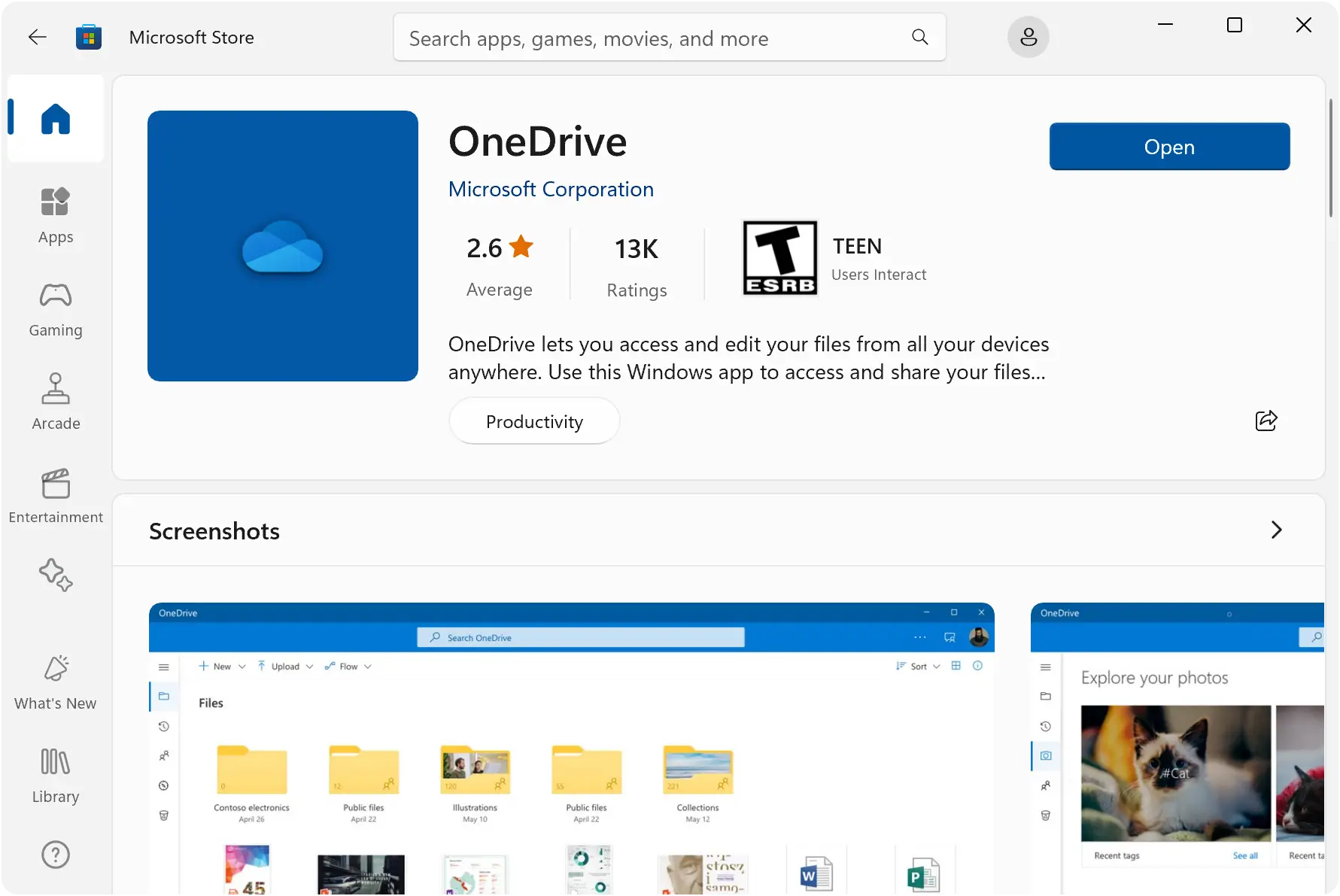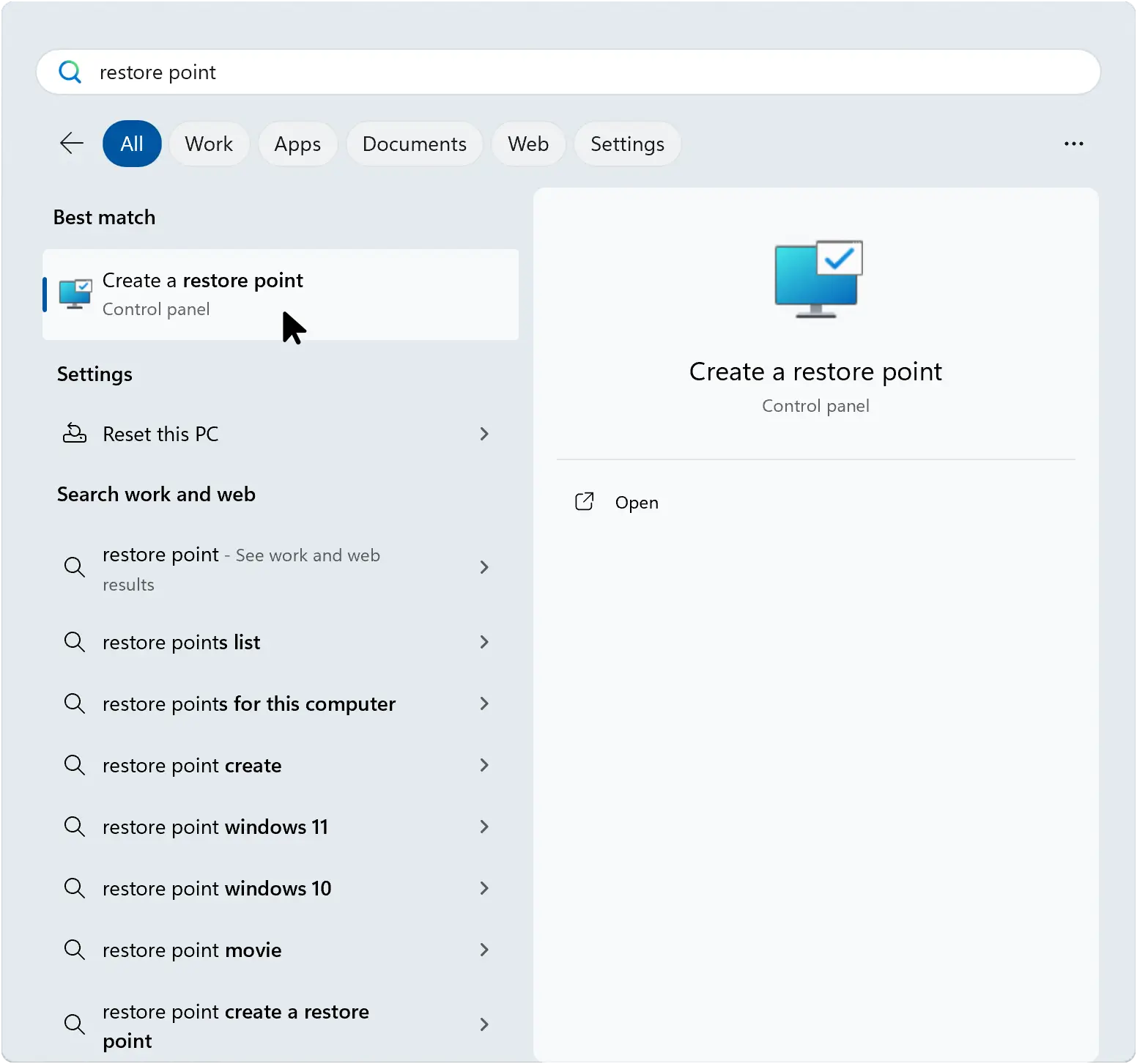Create a backup with Windows
How to Create a Backup on Windows 10 or 11 Using Built-In Tools.
It's important to create a backup of your data to ensure that your important files are safe and can be restored in the event of a system failure, accidental deletions, or other issues. Windows offers several built-in methods for creating backups. Here are the various methods you can use!


File History (Windows 10 Only)
File History is a simple way to back up your personal files and folders. Here's how to set it up:
-
1Open SettingsClick on the Start menu and select the gear icon to open Settings.
-
2Go to Backup SettingsNavigate to System > Storage > Advanced storage settings > Backup options.
-
3Add a DriveIn the "Back up using File History" section, click "Add a drive" and select an external drive or network location to store your backups.
-
4Configure File HistoryOnce a drive is added, you can configure what to back up and how often. Click "More options" to adjust the settings.
-
5Start BackupClick the "Back up now" button to start the initial backup. File History will now automatically back up your files regularly.


Backup and Restore
Windows 10 and 11 also include the Backup and Restore tool from Windows 7, which allows you to create a system image or back up individual files and folders:
-
1Open Control PanelPress the Windows key, type "Control Panel," and open it.
-
2Navigate to Backup and RestoreGo to System and Security > Backup and Restore (Windows 7).
-
3Set Up BackupClick "Set up backup" and choose where you want to save your backup (an external drive or network location).
-
4Select Backup OptionsChoose whether Windows should decide what to back up or if you want to select specific folders yourself.
-
5Create a System ImageIf you want to create a system image only or if it's not included in the previously created backup, you can do this in the "Backup and Restore (Windows 7)" window. Click "Create a system image" on the left pane and follow the instructions to save the image on an external drive or network location.
-
6Start BackupFollow the on-screen instructions to complete the backup process.


OneDrive
OneDrive offers cloud storage that can be used to back up your important files. Here's how to set it up:
-
1Sign In to OneDriveMake sure you are signed in to your Microsoft account and have OneDrive set up on your PC.
-
2Configure OneDriveClick on the OneDrive icon on the right side of the taskbar (you might need to click "Show hidden icons"), then click ⚙️ ("Help & Settings") > "Settings."
-
3Select FoldersGo to the "Sync and backup" tab and click "Manage backup" to choose which folders (Desktop, Documents, Pictures) you want to back up to OneDrive.
-
4Start BackupOneDrive will automatically sync the selected folders to the cloud, providing an external backup.


System Restore
Although not a traditional backup method, System Restore can help you revert your system files and settings to an earlier state without affecting your personal files:
-
1Open System PropertiesPress the Windows key, type "Create a restore point," and select it.
-
2Configure Automatic Restore PointsIn the window that opens, select a drive from the list and click "Configure." Here you can select "Turn on system protection" to back up the chosen drive. Also, use the slider under "Disk Space Usage" to set the maximum storage space for restore points (e.g., 10 GB). Confirm your settings by clicking "OK."
-
3Create a Restore PointIn the "System Properties" window, select the drive you want to protect and click "Create" to manually create a restore point. Windows will also automatically create restore points during significant system changes.
Conclusion
Windows 10 and Windows 11 offer several built-in methods for backing up your data, each with its own advantages.
File History is ideal for continuous backups of personal files, Backup and Restore is suitable for system images and more comprehensive file backups, OneDrive provides cloud-based backups for easy access anywhere, and System Restore allows recovery in case of system issues. Choose the method that best fits your needs to protect your data!
Isn't there an easier way?
Of course! With Ashampoo Backup Pro, you can back up whatever you want, wherever you want – fully automatic, in real time, and without burdening your system, allowing you to continue working seamlessly.
Whether it's your documents, photos, or entire partitions, once set up, the software backs up everything to the NAS, external hard drive, or cloud of your choice. And for emergencies, there’s even a complete rescue system with excellent driver and network support. If something goes wrong, simply use this system to restore all your data! It's your easy solution for malware attacks, defective hard drives, or Windows crashes!
Get the ultimate backup tool
 Oh happy May
Oh happy May

